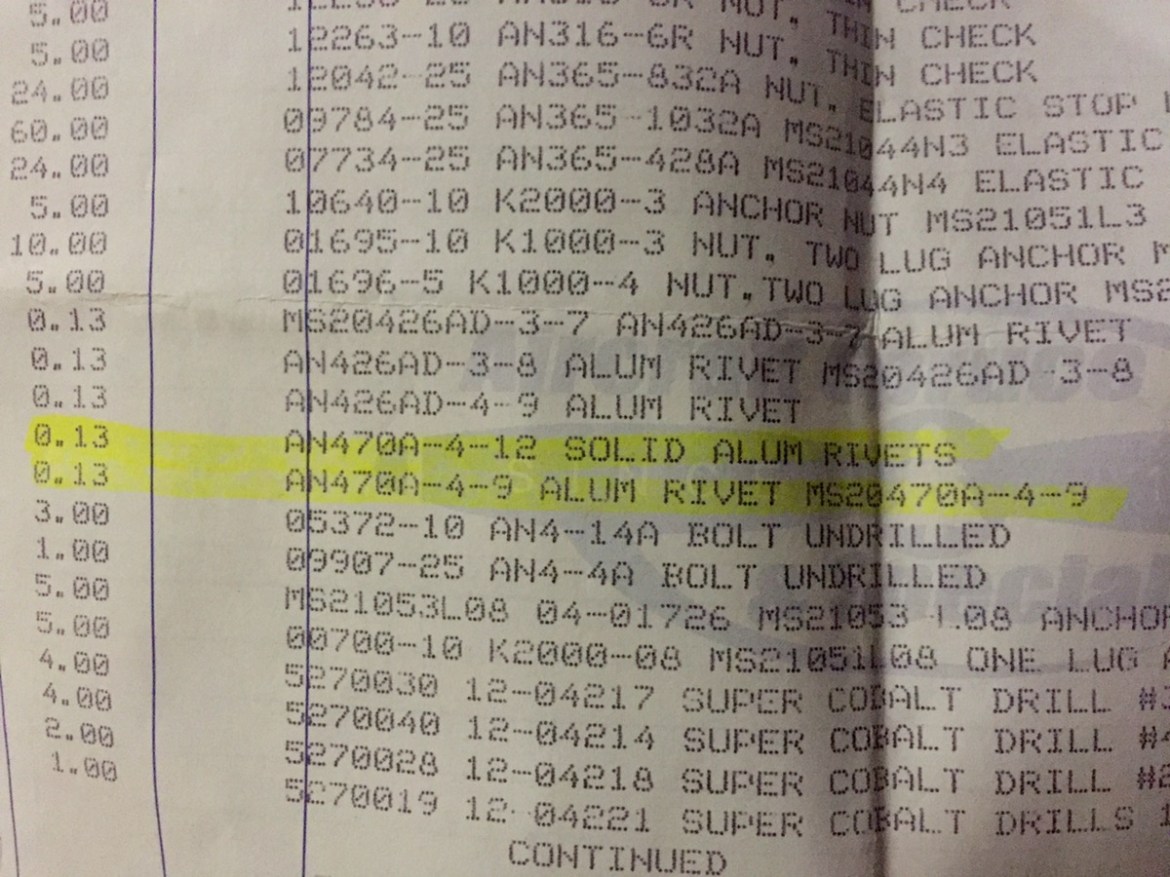Service Bulletin 14-01-31 (6)
Squire made his triumphant return to the hangar today! He had TPLO knee surgery in December as a result of a completely ruptured CCL (ACL). Its been 10 weeks, and he’s healing very well. No lameness and he’s able to start light jogging and other fun activities. He should be able to play fetch in another few weeks. He was super excited to return to the hangar!
Today I set about match drilling the doublers to the spar. The doublers are clamped in place. The position is adjusted by viewing the rivet lines drawn previously, and aligning the bend with the bend in the spar. Its also important to keep an eye on the rivet alignment. The pre-drilled holes in the doubler are offset from the holes in the spar. Additionally, you should ensure you have the proper amount of room between the doublers to allow the mounting of the vertical stabilizer. For drilling, you begin with the 8 rivet locations in the center of the doubler. You can see those locations here after drilling are attached with clecoes.
After you drill the center, its time to drill the remaining holes that attach the reinforcement angles. An angle drill works nicely. Use the adjacent cleco to aid in alignment.
Here is the finished result. Note the offset rivet immediately above the “L” and the “R”, this denotes the top of the doubler. Additionally, you will note the offset rivet on the lower side second from the inside. This is normal and is a match drill location. I’m very happy with how this has turned out, and I will sleep comfortably knowing the spar is strengthened!



Next I fabricated the angles that will be used to attach the HS-405 ribs after they have been trimmed.
And finally, I primed all the parts before re-installing. In the next session, I should be able to rivet everything together and call this service bulletin complete!
Session time: 4 hours.


















